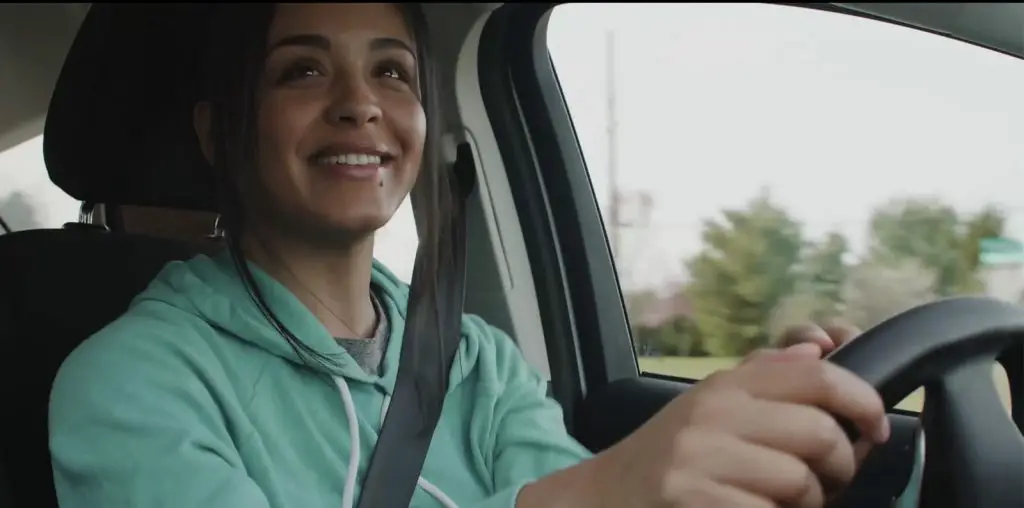
Seen through our jaded American eyes Studio Ghibli/Hayao Miyazaki films don’t seem very good at first glance. They’re sort of slow, they’re not very exciting, they feel a bit lightweight, and on top of that they’re kind of schmaltzy.
Yet… is that such a bad thing? Miyazaki isn’t lazy like other filmmakers. He doesn’t use the idea of children in danger to put audiences on the edge of their seats. He doesn’t manipulate the viewer at all in fact, and I think we’re so used to being manipulated by directors that we’ve simply forgotten what it’s like to just watch a story unfold in a natural organic way. Miyazaki movies are all about making you feel as if you’re five again for about ninety minutes. They’re the theatrical equivalent of getting a lump in your throat when you find one of your old stuffed toys while looking through some boxes, and remember its name.
The Secret World of Arrietty is based on the book series “The Borrowers” by Mary Norton about a family of tiny people living under a house in the countryside who “borrow” things from the regular sized folks upstairs. The rules of borrowing are very clear. Don’t take anything that the human beings – or “Beans” in Borrower slang – will miss and don’t be seen by them. If the Beans know you’re there then you must move away because staying will only end badly.
The film follows the character of Arrietty, a fourteen year old Borrower who lives with her parents under the aforementioned house in the countryside. We get the sense of a quiet, sometimes idyllic, sometimes lonely, life where nothing much happens except being chased by the owner’s cat. Their home is a wonderful and magical looking collection of clutter.
Yet one day this quiet is broken with the arrival of a sick Human boy who’s about Arrietty’s age. He’s been sent to live with his Aunt out here while waiting for a heart operation because his parents are embroiled in a messy divorce and are afraid that the stress of their situation might upset him too much.
Moments after arriving at the house he sees Arrietty. His reaction to the sight of a miniature girl is very telling, and so very “Miyazaki-ish”. That is to say, he’s not surprised at all. He’s heard the rumours of the little people before, so why would he be surprised? It’s a mystery and a secret, and for a boy who has obviously been sick and alone his whole life, and who is facing a frightening uncertain future, that’s something he needs right now.
One night Arrietty and her father go out looking for supplies to borrow, and Shawn sees them again when they enter his room. Arrietty and her father scamper off, and in the escape she loses a sugar cube that they’d taken from the kitchen earlier. The next day she sees Shawn put the cube by the opening that leads to where they live. Her father warns her to ignore the whole thing, but she can’t. She sneaks out one day and confronts the boy, letting him know she exists.
Why does Arrietty go see Shawn? She knows better than that. She knows how dangerous it is. Yet she does it anyway. My take? I think she’s lonely. She’s never seen another child before, Borrower or Bean, and sometimes the desire to hear another voice, a different voice, speak back to you is stronger than any sense of self-preservation.
This sets into motion a series of events that threatens the Borrower family. Yet, because this is a Miyazaki movie it never degenerates into a high-strung melodrama. Even the machinations of the family maid, who wants to trap the Borrowers for her own selfish ends, never feel overwrought. It retains a kind of gentleness throughout, and after watching thousands of dark and cynical movies I can’t tell you how refreshing this is.
Also, despite the fantastical elements this is just a sweet story about two lonely children forming a friendship. One of my favorite moments is when Arrietty is shocked to learn that Shawn does not expect to survive his heart operation. It’s not that he accepts the possibility of death. It’s just that he’s given up. This horrifies the girl because she’s been taught her whole life never to give up and to do so is unthinkable to her. The way she teaches him to quit this sort of defeatist attitude as they band together to save her mother is both subtle and charming.
This is truly a film for both parents and children. I really can’t find anything wrong with it. Not one thing. It’s a beautiful and poignant experience.
One thing I must mention is the sound design by Koji Kasamatsu. I don’t think I’ve ever heard a fuller sounding movie than this. Kasamatsu makes the beans’ house sound like a cavern to the borrowers as they make their way through it and we sense the sheer size of the thing from their perspective. I give a lot of credit to Kasamatsu for making these scenes, already impressive on their own, into something jaw-dropping awesome.
